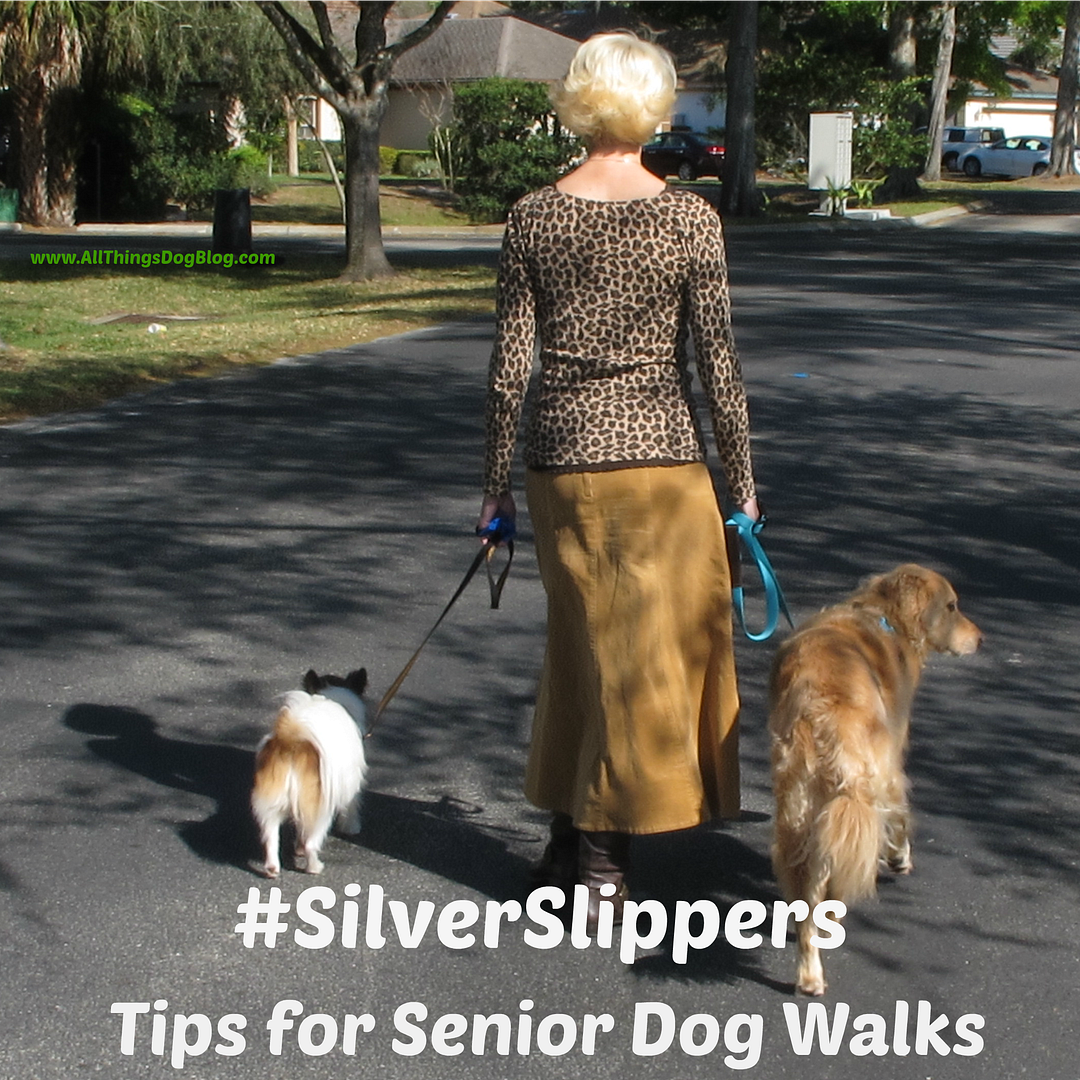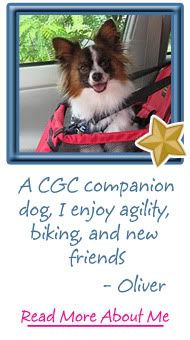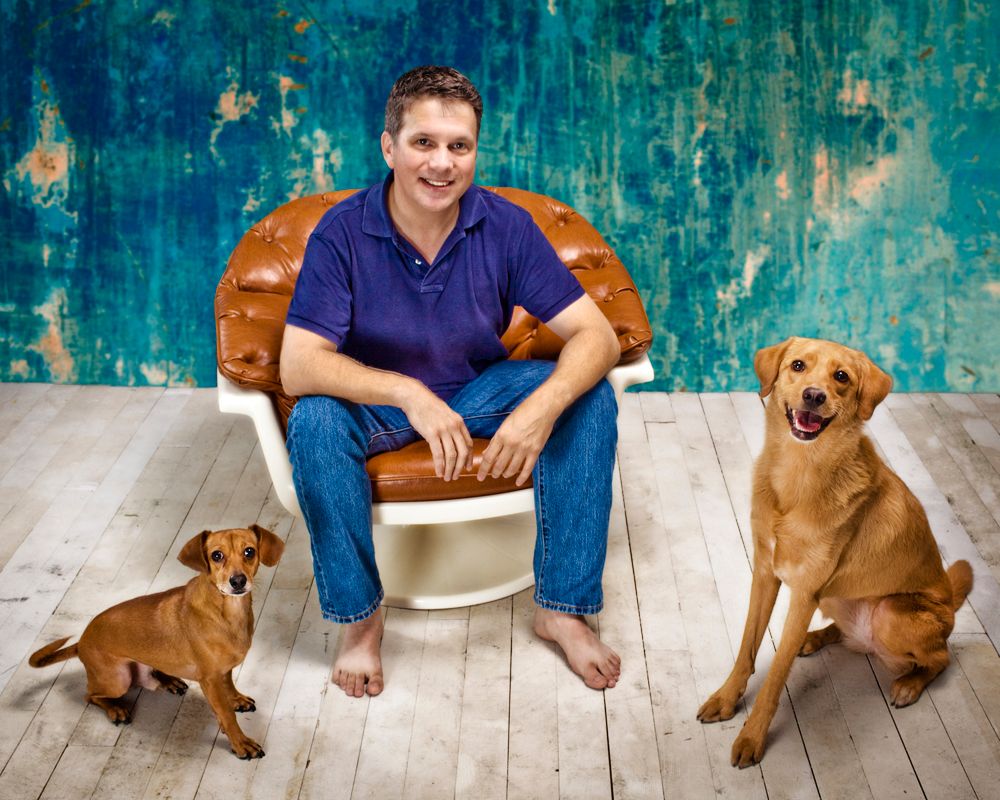by Carrie Boyko
(c) Alan Boyko
Walking 101
A week's summer vacation became a profound lesson for me as a dog owner. Here's where I have to swallow hard and fess up. About once a week or so, often when I need to work out of town for the day, I take Tanner and Oliver to play at a doggie daycare. On the weekend we regularly enjoy a romp at the dog park. No big news. You probably already knew this if you read much of this blog.
The real secret is that sometimes I don't manage to work in a structured walk on those days. Often the dogs come home tired, flop on the cool tile and are only interested in napping for the remainder of the day. That's fine. That's great. But what happens on the days they come home seemingly unphased by the social and physical activity of the daycare or the park?
Today I learned the answer to that question for the first time. It shouldn't be new information to me, but it nevertheless is a lesson in balancing the dogs' activity that I needed a reminder on.
Tanner has not been a 'chew-on-everything' kind of dog since his puppy days when training got that behavior in line. Much of that training involved extensive physical and mental exercise: biking, walking, swimming, agility courses, training, mental games and so on.
After arriving home yesterday, the dogs returned from the doggie daycare, where they were boarded for a week during our vacation. Being a free play facility, Tanner loves to go there. There are various levels for lots of jumping and climbing action, a splash pool, toys, balls, and lots of canine friends to play tag and wrestle with. There is even a playground monitor to keep tabs on all the 'kids.'
There is one thing missing though--a structured walk--where Tanner is reminded who the boss is. Today I learned that this ingredient is needed, if not necessary, even during a week's stay at this high-activity play-place. What happened? He destroyed two hangers (you know--that cardboard thing on pants hangers) and a plastic clasp on a tote bag. Granted, these bad boy actions are not the end of the world, but they were a wake up call for me to put first things first. The walk is primary. It is primal--like following the pack leader through the forest. Tanner's ancestors buried this in his DNA, and it is up to me to continue to honor this.
I've been home for a day and we've taken 3 walks, in addition to the other stuff like Fetch and swimming. We're getting there. I hope you guys got something out of my lesson. The moral of the story is you can't skip the walk.
If you have to ask yourself why Rover ate the couch, the answer is "Did you walk the dog?"
Related Reading:
- Backpacks aren't Just for Students and Hikers
- 10 Signs of a Happy Dog Owner
- 7 Habits of Highly Effective Dog Owners
(c) Alan Boyko
Tanner Focuses Better
with his Backpack
Check out my guest post over at Critter Minute, where I'm giving tips on Managing Your Multiple Dog Household. Like it? Leave a comment there.
Visit Adopt a Dog Park
Help protect our precious dog parks
© Carrie Boyko, all rights reservedFollow All Things Dog at Twitter Find me at Facebook

© copyright Carrie Boyko, all rights reserved
Bookmark this on Delicious






































2 comments:
Nature by Dawn said...
I made the mistake of using a retractable lead with Maya when she was a pup. As a result, she never learned to properly walk on a leash without jerking my arm off. It wasn't until last summer that I began training her to walk with a regular collar and regular leash. It was hard work - made harder because I didn't teach her correctly to begin with. But it has paid off. Maya is now great on a leash 90% of the time.
Start teaching structured walking as early as possible in the dog's life. Don't depend on retractable leads. Don't resort to choke collars unless all other methods have failed. If you teach them the right way early and keep it up throughout their life, going for walks will be a lifelong enjoyment for you both.
Carrie, with Tanner and Oliver said...
You're right, Dawn. Retractable leads have the disadvantage of giving the dog the idea that he's in charge. That has a tendency to make things tough, especially when walking more than one dog.
Turning the walk into a mental exercise, as well as a physical one embeds the attitude that you are the leader. This makes for a much better bond and earns you lots of trust points when you are a benevolent boss.
Post a Comment